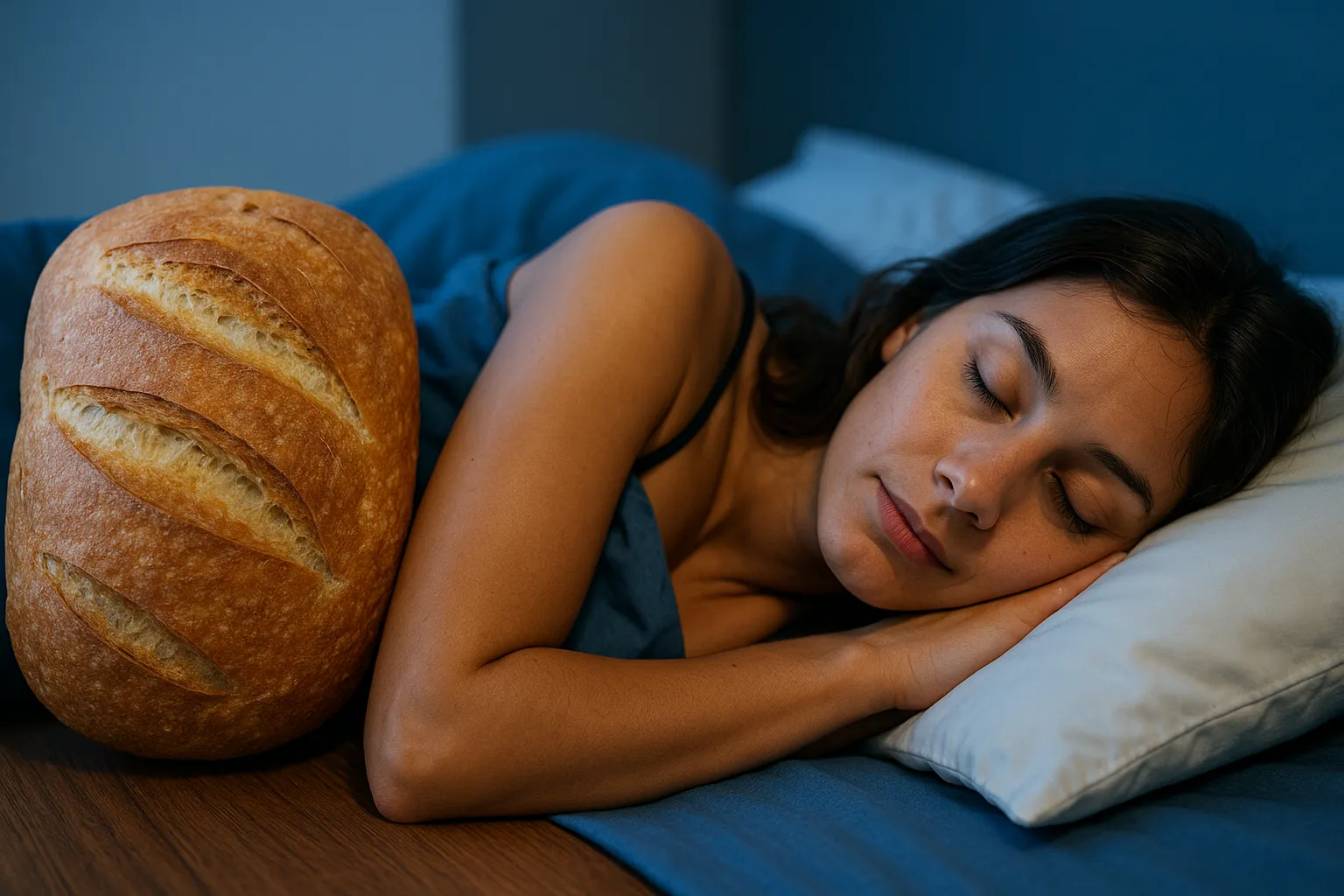Breathe Easy, Sleep Better: Essential Humidity Accessories for Optimal Rest
Discover the essential humidity accessories—humidifiers, dehumidifiers, and hygrometers—needed to achieve the perfect 40-60% relative humidity for better respiratory health, reduced snoring, and deeper, more restful sleep. Improve your sleep environment today.

The Crucial Role of Humidity in Sleep Quality
It's a familiar scenario: you crawl into bed, ready for a restful night, only to wake up with a dry throat, irritated sinuses, or static hair. While factors like mattress comfort and room temperature get a lot of attention, one of the most overlooked yet vital elements for truly restorative sleep is **the humidity level** in your bedroom environment. Maintaining optimal indoor humidity—typically between 40% and 60%—is not just about comfort; it's a fundamental aspect of respiratory health and overall sleep quality.
When the air is too dry, it can strip moisture from your skin and the mucous membranes in your nose and throat. This drying effect can lead to a host of night-disrupting issues, including snoring, sinus congestion, nosebleeds, and exacerbation of conditions like asthma and eczema. Conversely, air that is too humid can create a breeding ground for dust mites, mold, and mildew, which can trigger allergies and negatively impact air quality. Finding that sweet spot is key, and that's where essential humidity accessories come in.
This comprehensive guide will explore the must-have accessories designed to help you monitor, control, and maintain the perfect humidity level, transforming your bedroom into an ideal sanctuary for deep, uninterrupted sleep.
The Cornerstone Accessory: Humidifiers
A humidifier is arguably the most important tool for combating dry air, especially during winter months when indoor heating drastically lowers humidity. Not all humidifiers are created equal, however. Understanding the different types available is the first step toward choosing the right one for your sleep needs.
Types of Humidifiers and Their Sleep Benefits:
- Cool Mist Humidifiers: These use a fan to blow air through a wick or diffuser (evaporative) or ultrasonic vibration (ultrasonic) to disperse a fine, cool mist into the air. They are often recommended for children as they pose no burn risk. The **ultrasonic models** are notably quiet, making them an excellent choice for light sleepers.
- Warm Mist Humidifiers: These use a heating element to boil water, releasing steam into the air. The boiling process can naturally kill some waterborne bacteria and minerals. While they produce a slightly audible bubbling sound and are warmer, the sterile, warm mist can be particularly soothing for coughs and cold symptoms.
- Vaporizers: A type of warm mist humidifier often used with medicated inhalants. They are powerful but require careful use due to the exposed heating element.
- Whole-House Humidifiers: Integrated directly into your HVAC system, these provide consistent humidity control throughout your entire home, eliminating the need for portable units in every room. While a larger investment, they offer the most comprehensive solution.
Key Features for Sleep-Focused Humidifiers:
- Quiet Operation: Look for models specifically labeled as "ultrasonic" or "silent." A loud whirring or dripping sound will defeat the purpose of better rest.
- Auto Shut-Off: A critical safety feature that turns the unit off when the water tank is empty. This prevents damage and overheating.
- Built-in Humidistat: This allows the unit to monitor the room's current humidity and automatically turn on or off to maintain a preset level (e.g., 45%), ensuring the air is never too damp.
- Top-Fill Design and Large Capacity: Easier refilling and less frequent maintenance are essential for consistent nightly use. A large tank means the unit can run all night without needing a refill.
- Filter vs. Filterless: Filtered units trap mineral deposits but require regular filter replacement. Filterless (ultrasonic) units require less maintenance but may leave "white dust" if you use hard water. Consider using distilled water to mitigate this issue.
The Monitoring Must-Have: Hygrometers (Humidity Meters)
You can't manage what you don't measure. A **hygrometer**, often combined with a thermometer, is an indispensable accessory for anyone serious about optimizing their sleep environment. This simple device accurately displays the current relative humidity (RH) level in the room.
SEO Insight: The ideal humidity range for human health and sleep is generally considered to be between 40% and 60% relative humidity. Staying within this range helps reduce the viability of airborne viruses and minimizes skin/respiratory irritation.
Without a hygrometer, you are simply guessing. Your humidifier might be running too high, leading to mold growth, or too low, offering no real benefit. Placing a hygrometer near your bed allows you to quickly verify that your humidifier or dehumidifier is operating effectively and maintaining the target RH level throughout the night. Look for digital models for precise, easy-to-read measurements.
Controlling Excess Moisture: Dehumidifiers
While dry air is a common problem, especially in heated homes, homes in naturally humid climates (coastal areas, basements) or during summer months may suffer from *too much* moisture. High humidity (above 60%) can significantly worsen allergies, asthma, and can even feel stiflingly warm, disrupting thermal comfort during sleep.
A **dehumidifier** works by pulling excess moisture from the air, collecting it in a water reservoir, and then releasing the now-drier air back into the room. For bedroom use, the primary considerations are size and noise:
- Small, Portable Units: Ideal for single bedrooms, these are typically thermoelectric (Peltier) models which are extremely quiet, though less powerful than compressor-based units. They are perfect for maintaining moderate humidity control in a contained space.
- Compressor-Based Units: More powerful for larger rooms or severe dampness, but they are significantly louder due to the fan and compressor, which may not be conducive to a quiet sleep environment. If using one, look for models with a dedicated "Sleep Mode" or set them to run during the day.
Like humidifiers, a good bedroom dehumidifier should have a built-in humidistat and a continuous drain option (to avoid having to empty the tank daily).
The Essential Maintenance Tools
A humidifier is only as effective and healthy as its maintenance. Neglecting cleaning can turn your essential sleep accessory into a source of indoor air pollution, often called "sick humidifier syndrome," where mold and bacteria are dispersed into the air you breathe.
Cleaning and Maintenance Accessories:
- Distilled Water: The most straightforward way to reduce mineral buildup (white dust) and the growth of mold and bacteria. While tap water is often used, switching to distilled water drastically reduces the frequency of deep cleaning.
- Demineralization Cartridges or Tablets: These are accessories added to the water tank to help bind and neutralize minerals, extending the life of the unit and reducing white dust, particularly with ultrasonic humidifiers.
- Cleaning Brushes and Solutions: Regular cleaning (every 2-3 days for the tank) with a mild bleach solution, vinegar, or citric acid is non-negotiable. Specialized small brushes are helpful for reaching the nooks and crannies of the water tank and the ultrasonic diaphragm.
- Replacement Filters/Wicks: If your unit uses a filter or wick, it must be replaced according to the manufacturer's guidelines. A clogged, dirty wick cannot absorb water effectively, significantly reducing the humidifier's output.
Beyond the Unit: Supporting Accessories
Optimizing the sleep environment extends to how you integrate the main humidity unit into your bedroom.
Positioning and Integration:
- Waterproof Mat or Tray: Always place your humidifier or dehumidifier on a waterproof surface to protect wood furniture, carpets, and floors from spills or condensation.
- Smart Plugs and App Integration: Modern humidity accessories often connect to smart home systems. Using a smart plug allows you to schedule the unit to turn on an hour before bedtime and off when you wake up, or even control it remotely via an app. This is particularly useful if the unit does not have a native timer function.
The Synthesis: Building Your Optimal Sleep Zone
Creating the perfect humidity-controlled sleep environment is a three-part process:
- Monitor: Use a **hygrometer** to determine the baseline humidity level and track changes.
- Adjust: Use a **humidifier** to raise the RH during dry periods or a **dehumidifier** to lower it during damp periods, targeting the 40%-60% zone.
- Maintain: Regularly clean the unit, use **distilled water** or demineralization accessories, and replace **filters** to ensure the air being dispersed is clean and healthy.
By investing in and properly utilizing these essential humidity accessories, you are making a direct investment in your health. A well-humidified bedroom environment means less irritation, reduced susceptibility to illness, better breathing, and ultimately, the deep, refreshing sleep your body needs to thrive. Take control of your air, and you'll take control of your rest.
Sweet dreams are just a well-maintained humidifier and a glance at a hygrometer away.


